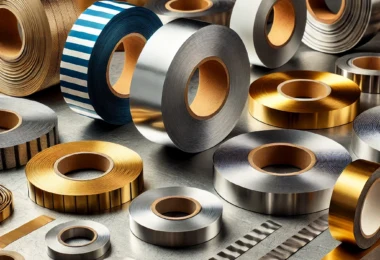Any web designer can create a website that looks okay, but you need a site that makes a lasting impression and drives business growth. Learn how to avoid common design mistakes and get ahead of your competition with an innovative construction website that impresses your visitors.
The best construction website designs feature large header photos, representing your company’s work. This allows you to quickly convey to your potential clients what kind of work you do.
1. Clean Design
For the construction industry, it’s important to create a website that reflects your company’s clean and confident persona. A simple design is a great way to do this and also helps your website rank higher on Google search results. This is because Google takes into account User Experience (UX) when ranking websites. A site with a good UX will have more quality traffic than one that’s not as user-friendly.
For this reason, many construction companies use a simple design that’s easy to navigate and doesn’t distract the visitors. This type of design also allows the company to highlight their work without cluttering up the page. This is especially important for showcasing projects that require special equipment or skill sets.
The first thing a visitor sees when they visit your website is the area above the fold. Similar to the front page of a newspaper, this is the section that will either catch their attention and make them scroll or click on your CTAs, or they will hit the back button and leave your site. There are several things you can do to improve your construction website’s ability to capture and convert users, such as using a video or putting your contact form on every page of the site.
2. Minimalist Color Palettes
Color is a crucial factor when it comes to branding, and minimal color palettes are a popular option for websites that want to convey a feeling of sophistication and clarity. White, gray, taupe, and other neutral shades are a good choice for a minimalist color palette, but you can also choose a hue that has some meaning to your construction company.
For example, if you run a commercial construction business, choosing a blue color scheme can convey professionalism and reliability. Red is a good option for construction companies that want to emphasize their speed and energy, while orange evokes optimism and cheerfulness.
You can find a variety of free, simple online tools for generating your own minimal color palettes. One popular tool is Colordot, which lets you modify colors using your cursor and save them in a PNG file or permalink. Another is Palettable, which offers a similar interface to Colordot but has more options for customizing the palette.
Some sites even choose to skip color altogether and use white or black as their main background or font. This approach is often referred to as brutalism, and it’s popular for website designs that emphasize functionality over aesthetics. For example, this site from Martini Prefabbricati S.P.A. uses a simple, clean layout that reflects the company’s focus on functionality and quality work.
3. Social Media Integration
Two decades ago, a construction company could simply make a website using a template and include a few grainy photos and contact information to be considered professional. But in today’s competitive business environment, you need to do a lot more than that to stay on top of your game.
As a part of this, many companies are starting to integrate their social media accounts into their websites. This helps to promote the company’s content and increase brand awareness. It also provides a quick way for customers to contact the company or ask questions about their project.
One popular way to do this is by adding a “follow” button at the bottom of each page. This makes it easy for visitors to follow the company on social media and get updates whenever new posts are made. It’s also a great way to show off recent work and projects.
Many construction companies are using video as part of their marketing strategy, and it’s a great way to highlight the work they do. Some examples include time-lapses of projects, interviews with clients, or demonstrations of new equipment.
4. Video Backgrounds
Whether it’s in the form of a full-screen time-lapse or a video clip, using a video background on your construction website can be a powerful way to grab visitors’ attention. This type of background can help you communicate your company’s values, showcase past projects, and provide social proof. Plus, it’s a great way to set the mood and demonstrate your expertise before someone even calls you.
This construction site’s video background is a powerful way to communicate the scope of its work and inspire potential clients to get in touch. Plus, the animations are a perfect match for the theme of the site and make the website feel slick and modern.
A video in the header of a website can be effective when it’s short and doesn’t distract from your message. It’s important to remember that your audience has an attention span shorter than a goldfish, so videos must be brief and easy to understand. If you want to use a video as a background on your construction website, be sure it doesn’t require viewers to do anything to interact with it or control the playback speed. Instead, it should simply act as background and set the tone for your site.
5. Interactive Maps
Adding interactive maps to your website can be an excellent way to showcase your business’s work or project locations and boost audience engagement. This is especially true if your organization has a large geographical reach or you need to show how your work affects the local community. Interactive maps can be used in a variety of ways, depending on your industry and needs. For example, nonprofit organizations often leverage them to display the geographic scope of their work, while B2B or B2C companies may use them to show office locations.
The first thing visitors see on a construction company’s website is usually one or more large header photos. These photos are meant to show the kind of work a construction company does, while also creating a sense of trust. Some of the best websites feature a slideshow of images that rotate as you scroll, but others have just one photo. Regardless of how many photos are on the homepage, they should all be professionally shot to add quality to your site.
Lastly, most construction websites are very clear about how to contact the company. They usually place their contact information in the navigation bar or in a prominent spot on the homepage. This ensures that potential clients can easily reach out when they’re ready to start a new project.
Thanks for visiting timesofrising
















